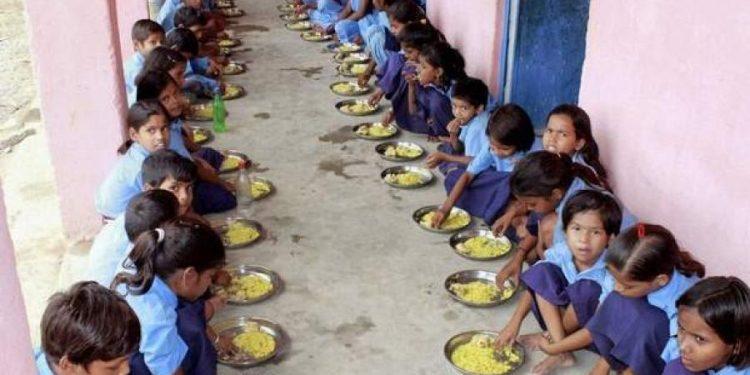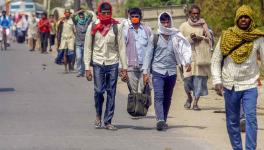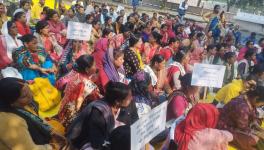What Lessons Can We Learn From Strategies to Deliver Meals to School Children During COVID-19 in India and the USA?

India and the USA follow similar guidelines to run meal services during the pandemic, but Indian states faced greater challenges, points out Dr. Adity Saxena and Dr. Ezaz Ahmed
———
School meal service programs are common worldwide, they offer free or subsidised meals to students during school hours. Meal services are provided by countries to cater to millions of children and their food safety requirements.
The benefits of school meals differ for both developed and developing countries.
In developed countries, school meals are a source of getting nutritious food during school hours.
However, in developing countries, it is a tool to fight against malnutrition and give an incentive to the students to attend school.
An extended study in India stated that school meals improve class attendance, participation, children’s behavior, and focus on learning. In many cases, especially in developing countries, they are the only means of subsistence for students from vulnerable sections.
COVID-19 outbreak forced countries to implement nationwide lockdowns to stop the spread of the coronavirus which led to the shutting down of educational institutions globally. Across the world, institutions transitioned from classrooms to online teaching. But one of the major fallouts of this shift was the impact it had on school meal service programs.
Children Go Hungry
After the lockdown started in March this year, 1.5 billion school students had to sit home. About 370 million students that rely on free or subsidised school meals globally were the ones to bear the brunt.
To address these interruptions by the pandemic and to provide school meal services, governments all over the world quickly issued directives to ensure that meal services for millions of children were restored. For instance, alternatives like delivering packaged meals, food grains, and take-home meals were suggested. Many from vulnerable communities migrated back to their hometown sometimes situated in remote areas, in such cases money transfer was proposed as an alternative.
For instance in Muzaffarpur, Bihar, students received neither meals nor money from the school authority. This forced many children to return to agricultural work. Many were even forced to rag-pick and beg to survive.
Unfortunately, many school students eligible for free or subsidised school meals aren’t getting meals or any support despite all the directives.
Some nations do a better job than others at implementing guidelines to distribute meals to students during the outbreak, but there are prominent gaps to government-led schemes, and, in some countries, it is more striking than the others.
School authorities and meal service organizations faced many challenges such as lack of human resources to deliver meals to remote students, logistics issues, and increased fear among frontline workers facilitating meal services. In many cases, limited government support challenged the school authorities to innovate more creative ways to meet the necessity of children dependent on these meal services.
The world’s two most extensive meal service programs like mid-day meal and the National school lunch program, led by the Indian government and the United States Federal Government respectively, follow similar kinds of guidelines to run the meal service during the outbreak. However, many states in India faced more challenges in implementing meal service than the United States.
Challenges to Mid-day meal programs in India during COVID-19
On March 16, India’s government announced the nationwide school closure. Subsequently, many states failed to provide mid-day meals to students. For instance in Muzaffarpur, Bihar, students received neither meals nor money from the school authority. This forced many children to return to agricultural work. Many were even forced to rag-pick and beg to survive.
There were no state-level strategies for those who were volunteering and commuting to distribute meals in affected zones.
In March, Rs 78 and Rs 95 were transferred to students’ accounts by the Delhi Government and municipal schools. But since April students have not received any assistance, and in some cases, parents reported that they had also not received meals. According to The Logical Indian, based on a Right to Information document accessed by The Wire, over one lakh students in Uttrakhand did not receive meals under the mid-day meal scheme in April and May. This simply suggests that while many states were able to distribute meals in the first month of the lockdown, they failed to do so when the virus took a more radical shape in the following months.
Many state governments claimed that they did not receive funds allocated by the center, some claimed that there were inadequate food grains, and logistical issues responsible for the midday meal program’s poor implementation during this outbreak.
Crisis Plan Lacking
Many states in India assigned duties to school teachers and meal service workers to distribute meals without having a crisis plan to meet the logistical issues. Even though school teachers and meal service workers delivered meals by putting themselves and their family members at high risk by visiting COVID-19 containment zones. However, in most cases, school authorities could not even provide a safety kit to the school teachers and meal service workers.
There were no state-level strategies for those who were volunteering and commuting to distribute meals in affected zones. In many cases, teachers and volunteers used personal vehicles to distribute meals for students based in remote areas.
Can we learn something from the US-led meal service programs?
Contrary to the Indian situation, to ensure food security for children in the United States, the U.S. Department of Agriculture (USDA) hasn’t mandated the schools to offer food service during closures. Instead, instructed the local education authorities like school superintendents and school boards to apply innovative ways to feed children during this outbreak.
The USDA initiated another innovative and timely approach in public-private partnerships (PPP) to meet the fund requirements for transportation, safety kits, overtime pay for the meal service workers, and expanding its service.
Many schools applied the Summer Food Service Program approach. However, many could not do the same due to a lack of experience.
Innovative Strategies
The USDA introduced many innovative ways, like the “Grab and Go” meal service, meal hubs in New York City to ensure food security to the children. During the pandemic, the New York Department of Education created 400 meal hubs to offer meals to the New Yorkers.
Many school districts started a meal delivery service for remote students by using school buses. The meal service workers and bus drivers adhered to social distancing norms and maintained a safety kit while delivering meals in high-risk zones. In a few districts, teachers also supplied meals to nearby students.
The USDA initiated another innovative and timely approach in public-private partnerships (PPP) to meet the fund requirements for transportation, safety kits, overtime pay for the meal service workers, and expanding its service. “Meals to You” is an outcome of a successful partnership between USDA, the Hunger and Poverty program by Baylor University, McLane Global, and PepsiCo to feed rural American school kids and provide 5 million meals a week.
USDA and many school districts used multiple communication channels to ensure the safe distribution of school meals and convey safety measures. The USDA website regularly provided information about online registration for home delivery of meals, nutrition services, community food services, and food pick-up schedules in different locations.
According to a recent School Nutrition Association survey, more than 80 percent of schools now offer food drive-through pick up, and over half provide walk-up assistance.
On the other hand, India witnessed a lack of public-private partnerships, weak communication channels, and a dearth of a human-centric approach to implementing emergency guidelines for the mid-day meal program during the outbreak.
The Department of Agriculture’s new waivers policy permits parents to collect food on behalf of their children under the “Grab and Go” meal service. Jennifer LeBarre, Executive Director of school nutrition services at San Francisco Unified School District, said, “I hope that USDA extends those waivers until we have a cure, or until we have vaccines.”
Poor Show
On the other hand, India witnessed a lack of public-private partnerships, weak communication channels, and a dearth of a human-centric approach to implementing emergency guidelines for the mid-day meal program during the outbreak.
Countries around the world not only need to learn from their mistakes but also understand the successful strategies followed by other countries. Any errors can lead to intense nutritional and health implications for the children during the pandemic and even after it.
The COVID-19 pandemic highlights the need for more collaboration with private entities in many sectors, including meal service. There is a dire need for short-term and long-term policy-based solutions that ensure global food security for millions of children.
(Dr. Adity Saxena is an Associate Professor at Amity School of Communication. Dr. Ezaz Ahmed is Dean of Business Entrepreneurship & Technology at Columbia College. Views are personal.)
The article was originally published in The Leaflet
Get the latest reports & analysis with people's perspective on Protests, movements & deep analytical videos, discussions of the current affairs in your Telegram app. Subscribe to NewsClick's Telegram channel & get Real-Time updates on stories, as they get published on our website.
























